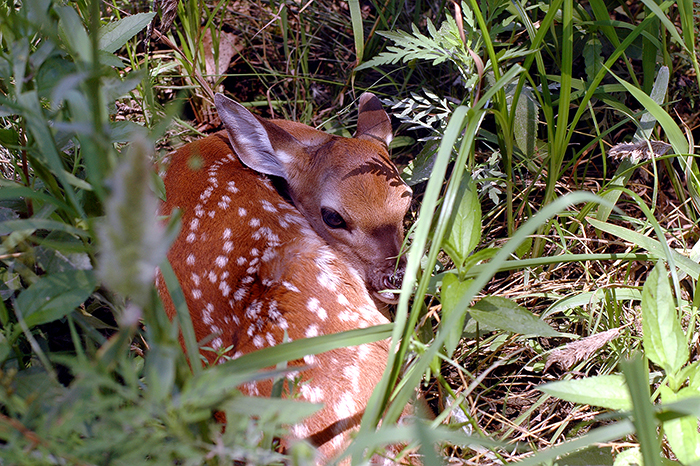by John Jefferson
The title does NOT refer to a fawn rising up out of the wildflowers and attacking you; the danger is TO the FAWNS.
As I write this, fawns are beginning to arrive all over Texas! It’s that time of the year. And it can continue throughout much of the summer.
Regular readers of the Woods, Waters, and Wildlife column have probably seen this before and may wonder why I repeat it every spring.
Well, judging from what I hear from Wildlife Rescue, Texas Parks and Wildlife (TPWD), Animal Control people (the dog catchers!), and even some of my friends, a significant segment of Texas’ population continues to think finding a fawn nestled in weeds in the countryside or in your flower beds have been abandoned by their mothers!
That just generally IS NOT SO. Were that the case, more people would report finding dead fawns in the weeds. Oh, there may be a few – life in the wild can be dangerous. Highway collisions may sadly rob fawns of their mothers. Wildlife scientists, however, agree that hiding their fawns in the weeds is standard mothering by the doe deer.
Birthing is known to be physically straining for mothers. As a guy, I don’t doubt that, and feel all mothers (except mosquitos) should have some time to recover from giving birth. But then there’s the strain of feeding.
Nursing mother doe deer must eat to provide nourishment for their growing offsprings. Newborn fawns won’t be able to follow mama while she’s browsing the landscape for sustenance, and their digestive systems won’t be ready for heavy meals for some time.
So, the only thing a doe can do is hide her young in the safest place she can find while she moseys off to munch a meal or two and get a little rest from her maternal duties. On a good year – one with adequate spring rains like much of Texas has received this year – tall weeds should be easy to find. That should help fawns get a good start going into the summer.
But if readers are new to Texas, they might not understand what happens here during summertime. It gets hellishly hot and often devastatingly dry. As that happens and wildflowers and other weeds begin to fade and wilt, forbs that deer eat become scarce. That means a doe might have to travel farther to find food and water. Longer foraging trips mean more time away from their hidden young.
And that can cause newcomers and native Texans to become concerned for the welfare of little spotted fawns – some of Nature’s most endearing creations. I get that. But please fight the urge to play God or Nature and let the system work as it has since Adam named the deer “deer.”
Fawns are without a scent at birth. Don’t contaminate them by touching. Definitely don’t try to move them – even if it’s raining! And don’t dare try to feed them anything. Their little tummies can only handle their mothers’ milk!
JJ





